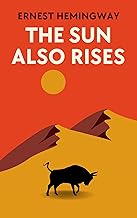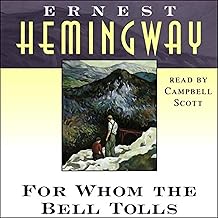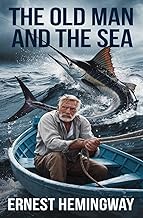
How to Read Ernest Hemingway's Books on Reading order
How to Read Ernest Hemingway's Books on Reading Order
Estimated Reading Time: 10-12 minutes
Introduction
Ernest Hemingway, one of the most influential American writers of the 20th century, is celebrated for his succinct prose and profound themes that delve into the human experience. Born in 1899, Hemingway's life was marked by adventure, war, and a quest for meaning, all of which shaped his literary output. His works resonate with readers not only for their narrative style but also for their exploration of complex themes such as love, loss, and the human condition.
In this guide, we will explore three of Hemingway's seminal works: The Sun Also Rises, For Whom the Bell Tolls, and The Old Man and the Sea. Each of these novels offers unique insights into the theme of reading order, a concept that reflects the journey of life and the choices we make along the way. Understanding the historical and cultural contexts of these works enhances their relevance and provides a richer reading experience.
Why Ernest Hemingway's Perspective Matters
Hemingway's approach to storytelling is distinctive due to his "iceberg theory," where the deeper meaning of a story lies beneath the surface of the text. This technique encourages readers to engage actively with the narrative, contemplating the subtext and themes that resonate with their own experiences. Unlike other writers who may provide explicit moral lessons, Hemingway leaves much to interpretation, allowing readers to derive their own meanings.
His works often reflect the disillusionment of the post-World War I generation, grappling with themes of existentialism and the search for purpose. This perspective is particularly relevant today, as readers navigate their own complexities in a rapidly changing world. Hemingway's exploration of the human spirit and resilience continues to inspire and challenge readers, making his insights invaluable.
Overview of Recommended Books
The Sun Also Rises
The Sun Also Rises (1926) is a poignant exploration of the "Lost Generation," a term coined by Gertrude Stein to describe the disillusioned youth who came of age during World War I. The novel follows a group of expatriates as they travel from Paris to Pamplona for the running of the bulls, encapsulating themes of love, identity, and the search for meaning.
Key Insights:
- Disillusionment and Identity: The characters struggle with their identities in a world that feels chaotic and meaningless. This reflects the broader existential questions faced by many today.
- The Nature of Love: Hemingway examines the complexities of romantic relationships, showcasing how love can be both uplifting and destructive.
- Cultural Exploration: The novel serves as a travelogue, immersing readers in the vibrant culture of 1920s Spain, which can inspire modern readers to appreciate the richness of diverse experiences.
Why Read This Book: The Sun Also Rises is essential for understanding the disillusionment of the post-war generation and the quest for identity. Readers interested in the dynamics of relationships and the impact of cultural settings will find this work particularly enriching.
For Whom the Bell Tolls
Published in 1940, For Whom the Bell Tolls is set during the Spanish Civil War and follows Robert Jordan, an American dynamiter working with a band of guerrilla fighters. The novel explores themes of sacrifice, duty, and the interconnectedness of humanity.
Key Insights:
- Interconnectedness: The title itself suggests that no one is an island; the struggles of one are tied to the struggles of all. This theme is particularly poignant in today's globalized world.
- Moral Ambiguity: Hemingway presents the complexities of war, highlighting the moral dilemmas faced by individuals in times of conflict.
- The Value of Sacrifice: The characters embody the idea of sacrifice for a greater cause, prompting readers to reflect on their own values and commitments.
Why Read This Book: For Whom the Bell Tolls is a profound meditation on the nature of human connection and the moral complexities of war. It is particularly relevant for readers interested in social justice, ethics, and the impact of conflict on personal identity.
The Old Man and the Sea
The Old Man and the Sea (1952) tells the story of Santiago, an aging fisherman who struggles to catch a giant marlin. This novella encapsulates themes of perseverance, dignity, and the relationship between man and nature.
Key Insights:
- Resilience: Santiago's relentless pursuit of the marlin symbolizes the human spirit's capacity to endure, making it a powerful narrative for anyone facing challenges.
- The Nature of Success: Hemingway challenges traditional notions of success, suggesting that true victory lies in the struggle itself rather than the outcome.
- Man vs. Nature: The novella explores the relationship between humanity and the natural world, prompting reflections on respect and humility in the face of nature's power.
Why Read This Book: The Old Man and the Sea is a timeless tale of resilience and the human condition. It appeals to readers seeking inspiration and a deeper understanding of their own struggles and triumphs.
How These Books Complement Each Other
Together, these three works create a rich tapestry of Hemingway's exploration of the human experience. The Sun Also Rises sets the stage for understanding the disillusionment of a generation, while For Whom the Bell Tolls delves into the moral complexities of war and human connection. Finally, The Old Man and the Sea offers a poignant reflection on resilience and the dignity of struggle.
Reading these works in sequence allows readers to witness the evolution of Hemingway's themes and styles, providing a comprehensive understanding of his perspective on life, love, and the human spirit.
Who Would Benefit from Reading These Books
These books are ideal for:
- Students and Academics: Those studying literature, history, or philosophy will find rich material for analysis and discussion.
- General Readers: Anyone interested in classic literature and the exploration of human themes will appreciate Hemingway's insights.
- Professionals Seeking Wisdom: Individuals looking for practical wisdom on resilience and moral decision-making can find valuable lessons in these narratives.
- Personal Growth Seekers: Readers on a journey of self-improvement will resonate with the struggles and triumphs depicted in Hemingway's works.
Recommended Reading Order
- Start with: The Sun Also Rises - This novel introduces the themes of disillusionment and identity, setting the stage for understanding the broader context of Hemingway's work.
- Continue with: For Whom the Bell Tolls - Building on the themes of connection and moral complexity, this book deepens the exploration of human relationships in times of conflict.
- Advanced reading: The Old Man and the Sea - This novella serves as a culmination of Hemingway's exploration of resilience and the human spirit, providing a reflective conclusion to the reading journey.
Tips for Getting the Most Out of Each Book:
- Take notes on key themes and personal reflections as you read.
- Discuss the books with others to gain new perspectives.
- Consider the historical context and how it relates to modern issues.
Conclusion
Ernest Hemingway's contributions to literature offer profound insights into the human experience, making his works essential reading for anyone interested in the complexities of life. By exploring The Sun Also Rises, For Whom the Bell Tolls, and The Old Man and the Sea, readers can engage with timeless themes that resonate across generations.
I encourage you to delve into these works and reflect on their relevance in your own life. Hemingway's exploration of resilience, love, and the human condition remains as vital today as it was when he first penned these stories. Happy reading!
Tags: #Ernest Hemingway #Reading order #Philosophy #ReadingGuide #ClassicLiterature #Wisdom
Featured Books

The Sun Also Rises
by Ernest Hemingway
Published: 1926
The only authorized edition of Ernest Hemingway’s first novel. “The ideal companion for troubled times: equal parts Continental escape and serious grappling with the question of what it means to be, and feel, lost.” —The Wall Street JournalThe Sun Also Rises is a classic example of Hemingway’s spare but powerful writing style. It celebrates the art and craft of Hemingway’s quintessential story of the Lost Generation—presented by the Hemingway family with illuminating supplementary material from the Hemingway Collection at the John F. Kennedy Library. A poignant look at the disillusionment and angst of the post-World War I generation, the novel introduces two of Hemingway’s most unforgettable characters: Jake Barnes and Lady Brett Ashley. The story follows the flamboyant Brett and the hapless Jake as they journey from the wild nightlife of 1920s Paris to the brutal bullfighting rings of Spain with a motley group of expatriates. It is an age of moral bankruptcy, spiritual dissolution, unrealized love, and vanishing illusions. First published in 1926, The Sun Also Rises is “an absorbing, beautifully and tenderly absurd, heartbreaking narrative...a truly gripping story, told in lean, hard, athletic prose” (The New York Times). The Hemingway Library Edition commemorates Hemingway’s classic novel with a personal foreword by Patrick Hemingway, the author’s sole surviving son, and an introduction by Sean Hemingway, grandson of the author. Hemingway considered the extensive rewriting that he did to shape his first novel the most difficult job of his life. Early drafts, deleted passages, and possible titles included in this new edition elucidate how the author achieved his first great literary masterpiece. Read more

For Whom the Bell Tolls
by Ernest Hemingway
Published: 1940
Ernest Hemingway's masterpiece on war, love, loyalty, and honor tells the story of Robert Jordan, an antifascist American fighting in the Spanish Civil War.In 1937 Ernest Hemingway traveled to Spain to cover the civil war there for the North American Newspaper Alliance. Three years later he completed the greatest novel to emerge from “the good fight” and one of the foremost classics of war literature. For Whom the Bell Tolls tells of loyalty and courage, love and defeat, and the tragic death of an ideal. Robert Jordan, a young American in the International Brigades, is attached to an antifascist guerilla unit in the mountains of Spain. In his portrayal of Jordan’s love for the beautiful Maria and his superb account of a guerilla leader’s last stand, Hemingway creates a work at once rare and beautiful, strong and brutal, compassionate, moving, and wise. Greater in power, broader in scope, and more intensely emotional than any of the author’s previous works, For Whom the Bell Tolls stands as one of the best war novels ever written. Read more

The Old Man and the Sea
by Ernest Hemingway
Published: 1952
The Old Man and the Sea is a melodramatic account of an aged fisherman called Santiago and his battles with nature's forces and human limitations. He had been going through weeks without any catch and now ventures out alone in the Gulf Stream.There, he engages in a monstrous battle with a marlin; hence, the story shows a lot of resilience, dignity, and tenacity in adversity. Through Santiago, Hemingway contemplates the magnitude of man's closeness to nature, in both the tragedy and beauty present in life. Read more